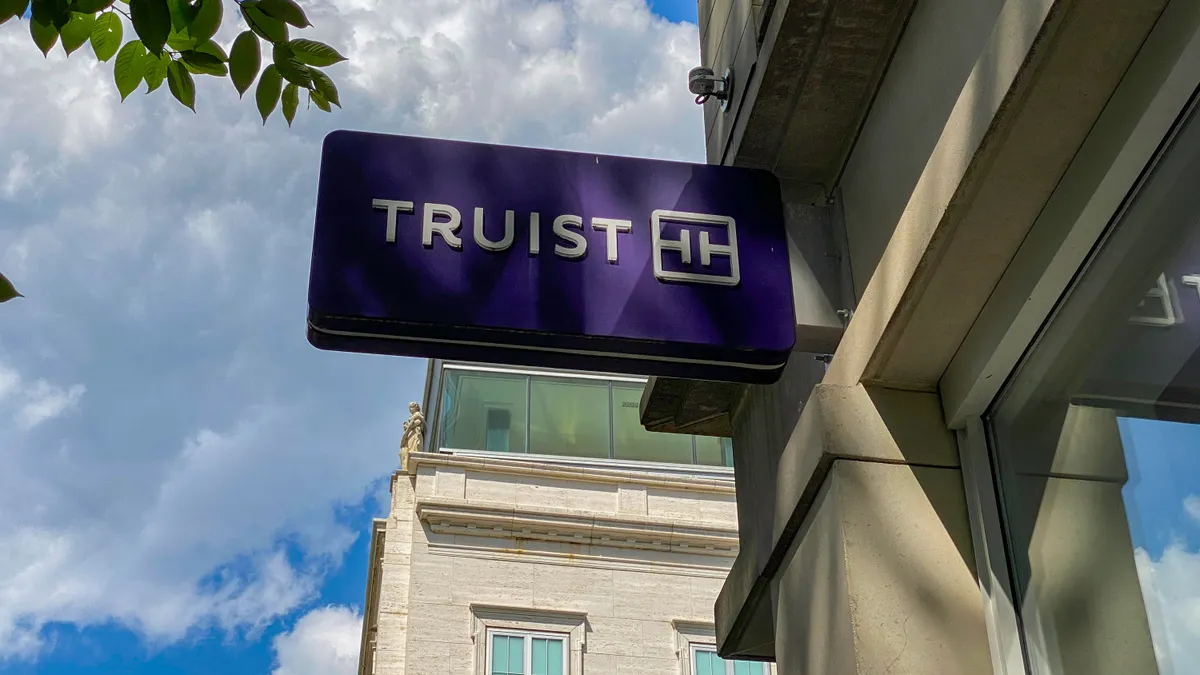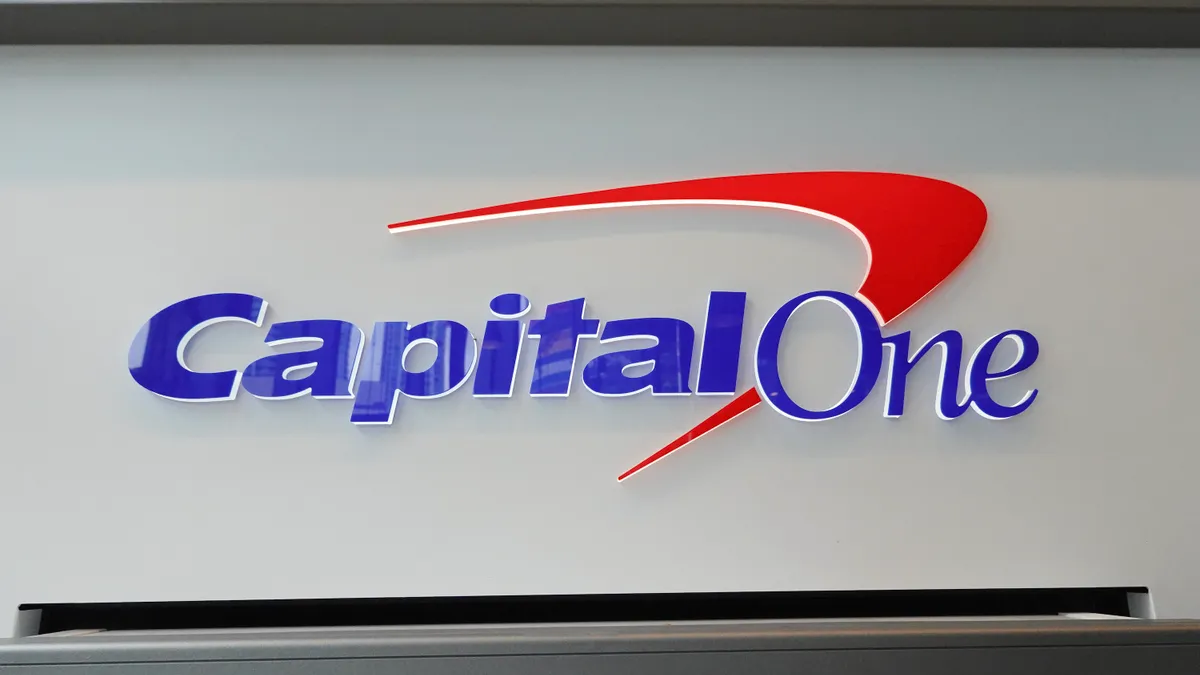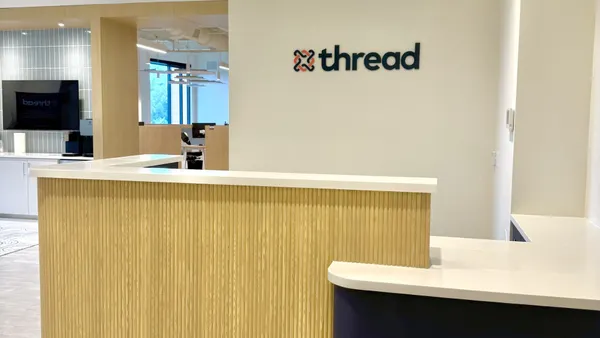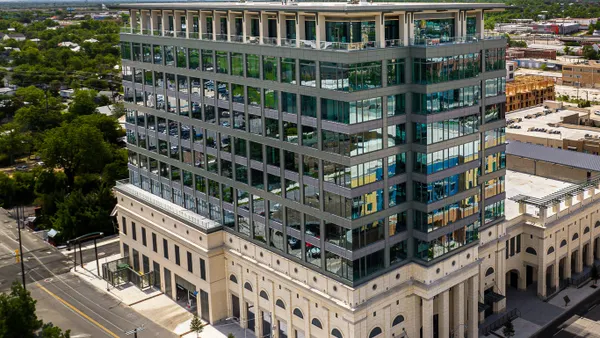Truist wants to build 100 new branches over the next five years and renovate more than 300 of its established locations in high-growth markets – mostly in the Sun Belt and East Coast, the bank said Wednesday.
The Charlotte, North Carolina-based lender is leaning in to markets – such as Austin and Dallas in Texas and Miami and Orlando in Florida – where it sees the best chance to broaden its mass-affluent customer base.
Specifically, Truist is targeting customers who have less than $100,000 with the bank but more than $100,000 in investable assets outside of it.
As part of the effort, Truist aims to hire additional “premier” advisers, who are dedicated to that tier of clientele.
Dontá Wilson, Truist’s chief consumer and small-business banking officer, said the bank has grown its premier team by 50% over the past nine months and intends to boost that by at least another 20%.
Truist calls its new branch model “insights-driven.” That’s meant to create a more personalized experience but with an assist from AI-driven analytics that deliver real-time information and marketing offers. (The bank is also developing a patent-pending AI tool to aggregate client feedback across millions of conversations, it said Wednesday.)
The model isn’t new but rather represents a scaling of a design that has shown early success for Truist, Wilson said.
Truist is averaging nearly half a million conversations per month through its AI-enhance digital assistant, and is delivering more than 550 million personalized, real-time financial insights per year – through another company-native AI-driven platform, the bank said.
But although more than 70% of affluent consumers prefer to rely on digital transactions, customers also value branch engagement for more complex financial moments, Wilson said, adding that branches can signal both stability and availability.
“The real story here is that we’re leaning in on a combination of making sure our clients are digitally empowered yet remain deeply relational,” Wilson said.
A counter to PNC, Fifth Third
The bank’s growth plan may stand as a counter to the strategies of regional competitors such as Fifth Third and Huntington and PNC.
Pittsburgh-based PNC, Truist’s nearest competitor in asset size, launched a strategy in early 2024 to build 100 new branches – then doubled that effort, specifically focusing on 12 markets, including many that are also on Truist’s radar: Austin, Dallas, Miami, Orlando, Atlanta and Charlotte.
Fifth Third, likewise, aimed to establish 200 new branches by 2028 – even using heat mapping to determine where best to build. The Cincinnati-based bank has put a special emphasis on the Southeast and expanded into Alabama this month.
Huntington, by contrast, used acquisition to expand its Texas footprint. The Columbus, Ohio-based bank announced last month it would buy Dallas-based bank holding company Veritex Holdings for $1.9 billion, a year after expanding its commercial banking presence to the region.
Global banks are eyeing expansion in the Sun Belt, too. Bank of America launched a plan in 2023 to expand into nine new markets, including New Orleans and the two largest cities in Alabama.
Unlike those banks, however, Truist is native to the Southeast.
Some of the markets Truist is targeting – Charlotte, Atlanta and Washington, D.C., for example – are areas where the bank already counts up to a 14% share of branches. In those markets, Wilson said, the bank aims to maintain momentum.
But there are also some markets where the bank is below 5%, such as Philadelphia, Dallas and Austin.
“We’ll be investing to get above that 5%,” Wilson said.
In Miami, another market flagged for its growth potential, the figure is 8%, Wilson added.
‘Defense to offense’
Analysts at Piper Sandler called Truist’s announcement “reminiscent” of strategies by PNC and Fifth Third, adding they are eager to see how the new effort “fits in the broader arc of [the bank’s] story.”
“For the past couple years, we have viewed TFC as transitioning from defense to offense (and taking on out-of-market competitors who have encroached upon its attractive footprint),” the analysts said. “This year, TFC has expanded and strengthened its middle market, commercial, and corporate businesses; and today’s plans symbolically make the same front-footed statement in consumer.”
The defense-to-offense transition coincides with Truist’s multiyear integration of legacy components from its predecessors, BB&T and SunTrust, which merged in 2019.
Wilson, for his part, said Truist will do some “rebalancing” as the new branches are built.
Truist is “always optimizing our branches,” he said.
In some cases, that will mean “taking expenses and repurposing those expenses into the things that are going to give us the best opportunity to grow,” Wilson said.














